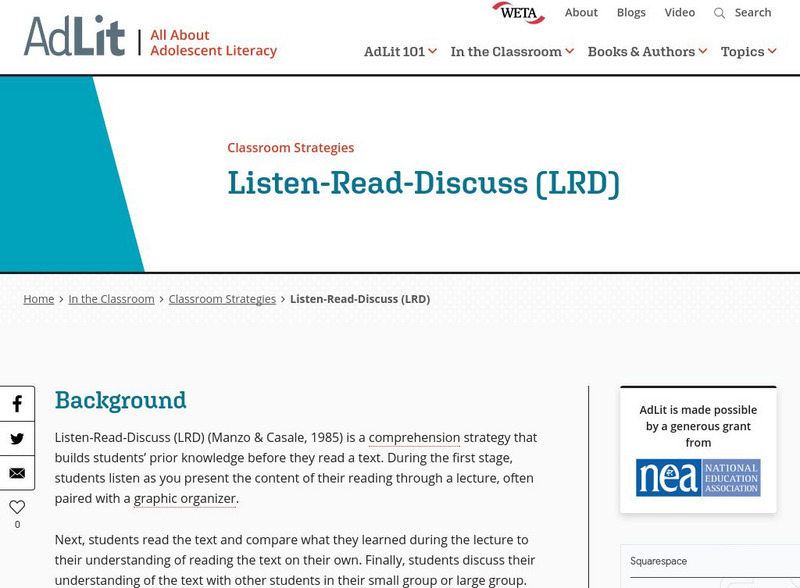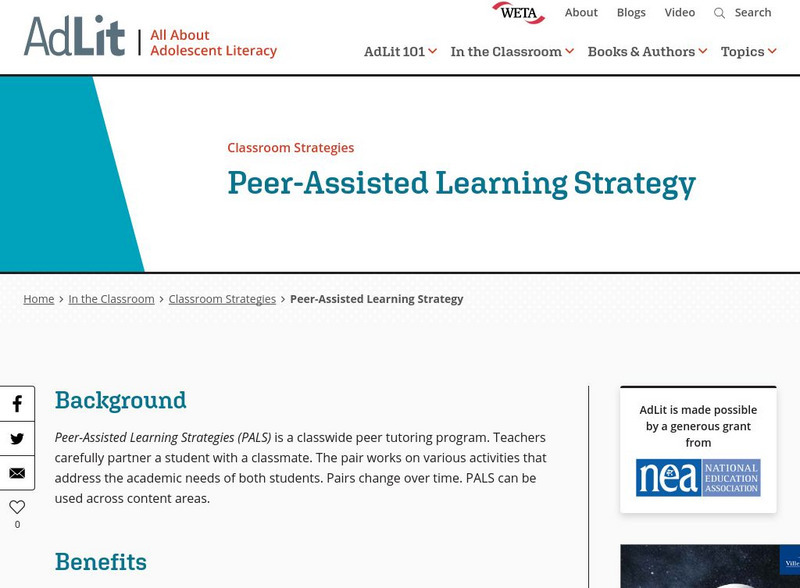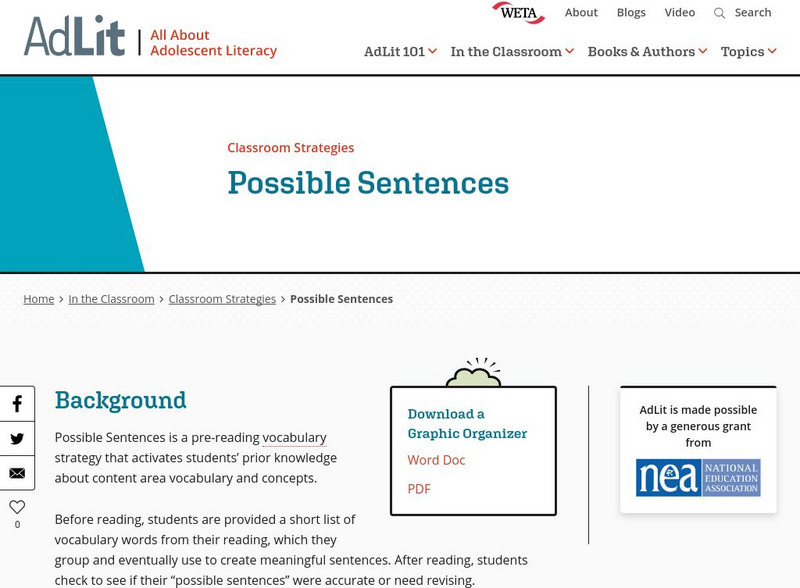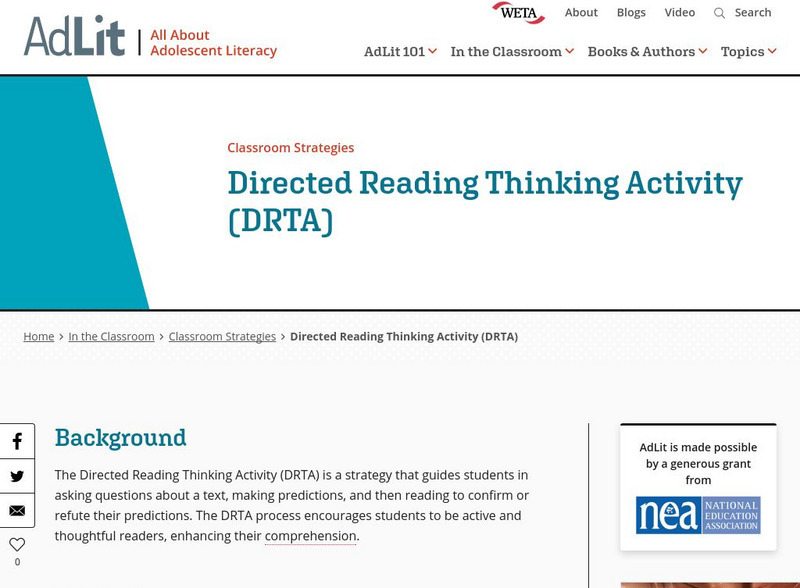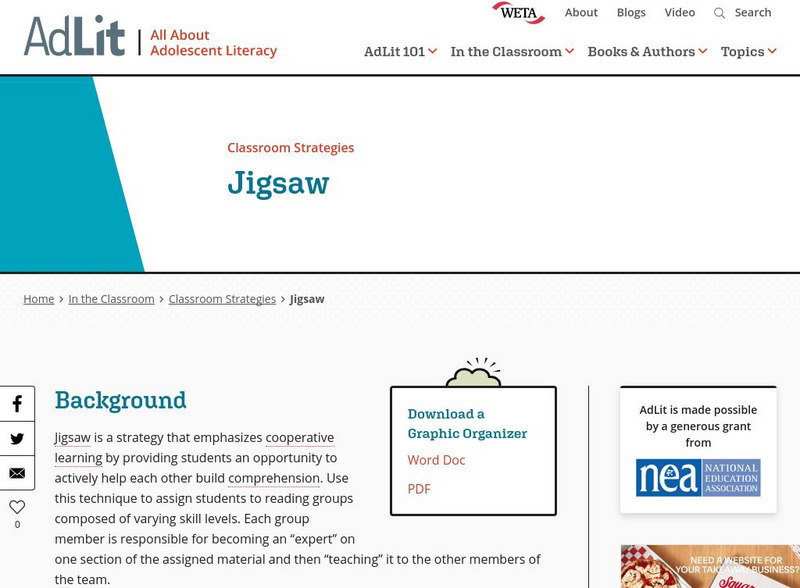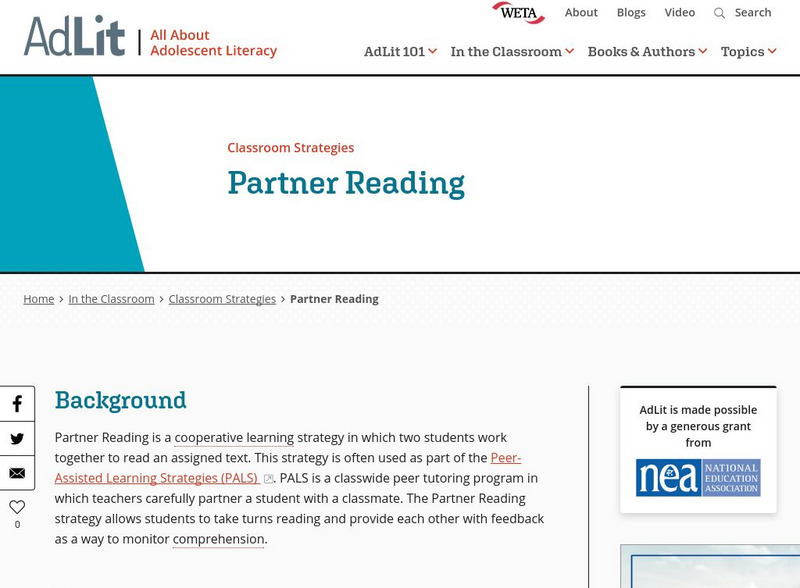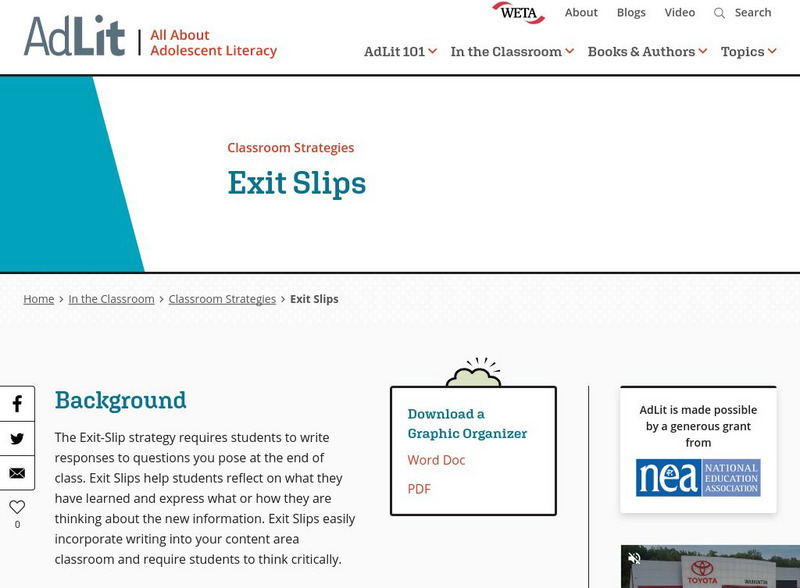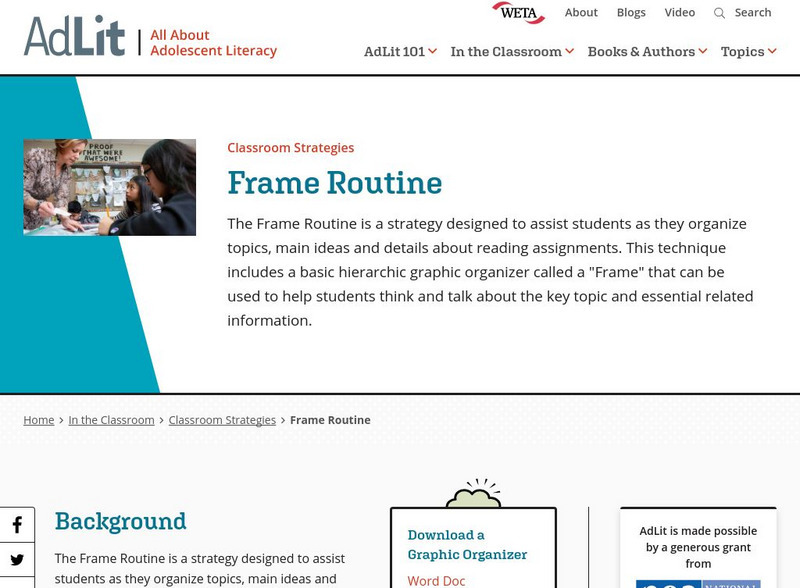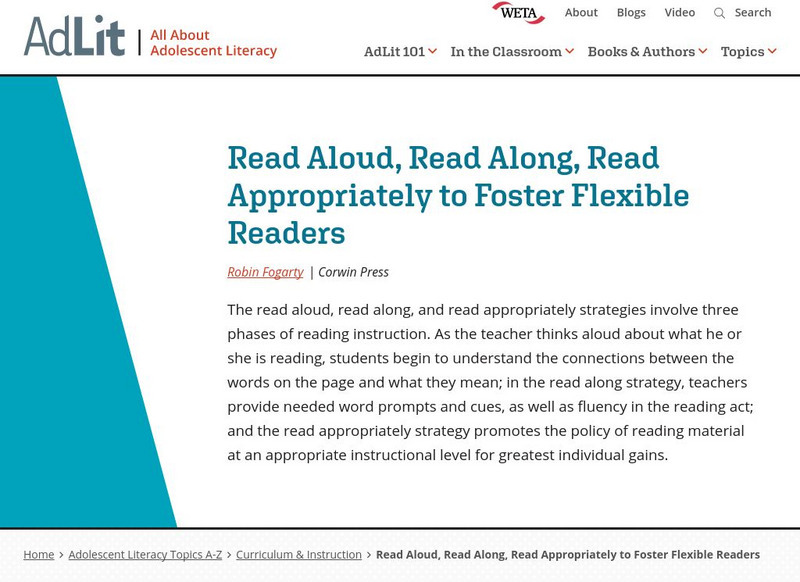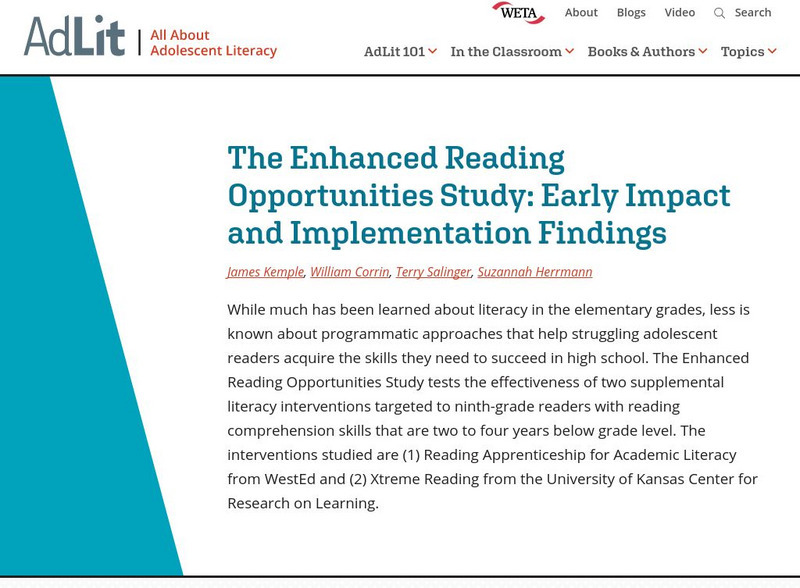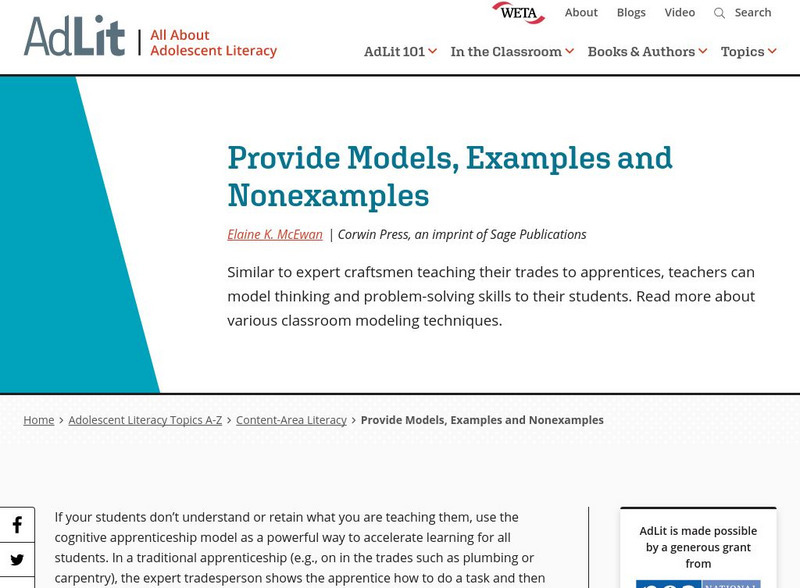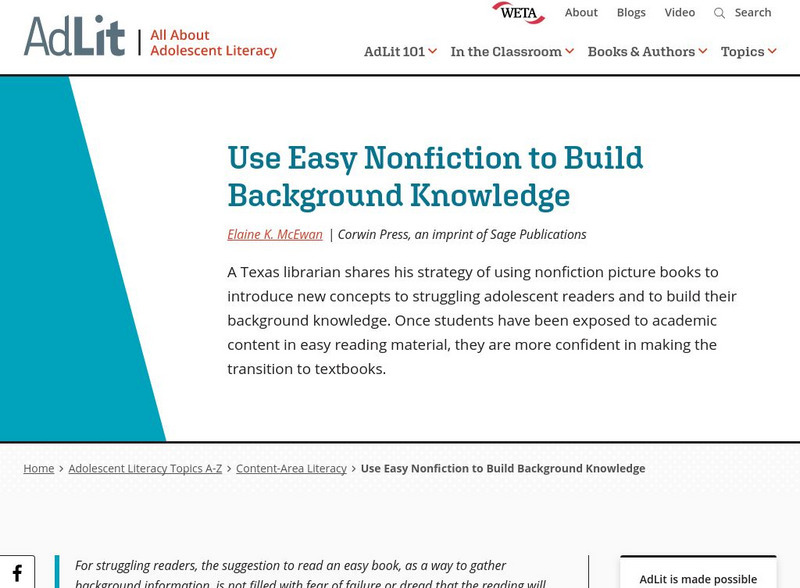AdLit
Ad lit.org: Classroom Strategies: Listen Read Discuss (Lrd)
Listen-Read-Discuss (LRD) (Manzo & Casale, 1985) is a comprehension strategy that builds students' prior knowledge before they read a text. During the first stage, students listen as you present the content of their reading through a...
AdLit
Ad lit.org: Classroom Strategies: Mnemonics
A mnemonic is an instructional strategy designed to help students improve their memory of important information. This technique connects new learning to prior knowledge through the use of visual and/or acoustic cues. The basic types of...
AdLit
Ad lit.org: Classroom Strategies: Peer Assisted Learning Strategy
Peer-Assisted Learning Strategies (PALS) is a classwide peer tutoring program. Teachers carefully partner a student with a classmate. The pair works on various activities that address the academic needs of both students. Pairs change...
AdLit
Ad lit.org: Classroom Strategies: Possible Sentences
Possible Sentences is a pre-reading vocabulary strategy that activates students' prior knowledge about content area vocabulary and concepts.
AdLit
Ad lit.org: Classroom Strategies: Concept Maps
A concept map help students visualize various connections between words or phrases and a main idea. There are several types of concept maps; some are hierarchical, while others connect information without categorizing ideas.
AdLit
Ad lit.org: Classroom Strategies: Directed Reading Thinking Activity (Drta)
The Directed Reading Thinking Activity (DRTA) is a strategy that guides students in asking questions about a text, making predictions, and then reading to confirm or refute their predictions. The DRTA process encourages students to be...
AdLit
Ad lit.org: Classroom Strategies: Inquiry Charts (I Charts)
The Inquiry Chart (I-Chart) is a strategy that enables students to generate meaningful questions about a topic and organize their writing. Students integrate prior knowledge or thoughts about the topic with additional information found...
AdLit
Ad lit.org: Classroom Strategies: Jigsaw
Jigsaw is a strategy that emphasizes cooperative learning by providing students an opportunity to actively help each other build comprehension. Use this technique to assign students to reading groups composed of varying skill levels....
AdLit
Ad lit.org: Classroom Strategies: Partner Reading
Partner Reading is a cooperative learning strategy in which two students work together to read an assigned text. This strategy is often used as part of the Peer-Assisted Learning Strategies (PALS). PALS is a classwide peer tutoring...
AdLit
Ad lit.org: Classroom Strategies: Power Notes
Power Notes is a strategy that teaches students an efficient form of organizing information from assigned text. This technique provides students a systematic way to look for relationships within material they are reading. Power Notes...
AdLit
Ad lit.org: Classroom Strategies: Exit Slips
The Exit-Slip strategy requires students to write responses to questions you pose at the end of class. Exit Slips help students reflect on what they have learned and express what or how they are thinking about the new information. Exit...
AdLit
Ad lit.org: Classroom Strategies: Frame Routine
The Frame Routine is a strategy designed to assist students as they organize topics, main ideas and details about reading assignments. This technique includes a basic hierarchic graphic organizer called a "Frame" that can be used to help...
AdLit
Ad lit.org: Scaffold Mindful Silent Reading
Help students internalize and routinize their reading comprehension monitoring with this sample lesson.
AdLit
Ad lit.org: The Teaching Moves of a Strategic Teacher
Research demonstrates the effectiveness of the 12 strategic teaching moves described in this article. On any given day in any given classroom, the strategic teacher employs all of these moves - whether with the whole class, a small...
AdLit
Ad lit.org: Reading (And Scaffolding) Expository Texts
To help students comprehend expository text structures, teachers can acquaint them with the signal or cue words authors utilize in writing each of the structures and use the graphic organizers offered in this article
AdLit
Ad lit.org: Read Aloud, Read Along, Read Appropriately to Foster Flexible Readers
The read aloud, read along, and read appropriately strategies involve three phases of reading instruction. As the teacher thinks aloud about what he or she is reading, students begin to understand the connections between the words on the...
AdLit
Ad lit.org: Explicit Comprehension Strategy Instruction
Use explicit strategy instruction to make visible the invisible comprehension strategies that good readers use to understand text. Support students until they can use the strategies independently. Recycle and re-teach strategies...
AdLit
Ad lit.org: Extended Discussion of Text Meaning and Interpretation
Teachers should provide opportunities for students to engage in high-quality discussions of the meaning and interpretation of texts in various content areas as one important way to improve their reading comprehension.
AdLit
Ad lit.org: Recommendations for Improving Adolescent Literacy
In its practice guide Improving Adolescent Literacy: Effective Classroom and Intervention Practices, the Dept. of Education offers five recommendations for increasing the reading ability of adolescents. Those recommendations are...
AdLit
Ad lit.org: The Enhanced Reading Opportunities Study
While much has been learned about literacy in the elementary grades, less is known about programmatic approaches that help struggling adolescent readers acquire the skills they need to succeed in high school. The Enhanced Reading...
AdLit
Ad lit.org: Provide Models, Examples and Nonexamples
Similar to expert craftsmen teaching their trades to apprentices, teachers can model thinking and problem-solving skills to their students. Read more about various classroom modeling techniques.
AdLit
Ad lit.org: Five Areas of Instructional Improvement to Increase Academic Literacy
How can content-area, non-reading-specialist teachers contribute to academic literacy? They can incorporate these five techniques throughout their lessons: (1) provide explicit instruction and supported practice in effective...
AdLit
Ad lit.org: Use Easy Nonfiction to Build Background Knowledge
A Texas librarian shares his strategy of using nonfiction picture books to introduce new concepts to struggling adolescent readers and to build their background knowledge. Once students have been exposed to academic content in easy...
AdLit
Ad lit.org: Use the Cooperative Learning Model
Cooperative learning fosters group accountability and provides struggling readers with the opportunity to work with stronger academic role models. Learn how to introduce this strategy in the classroom.
